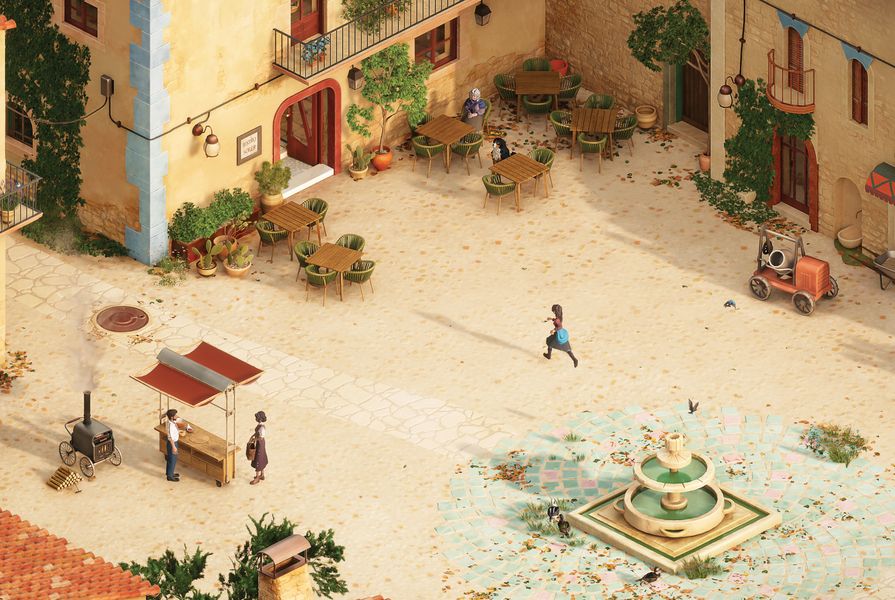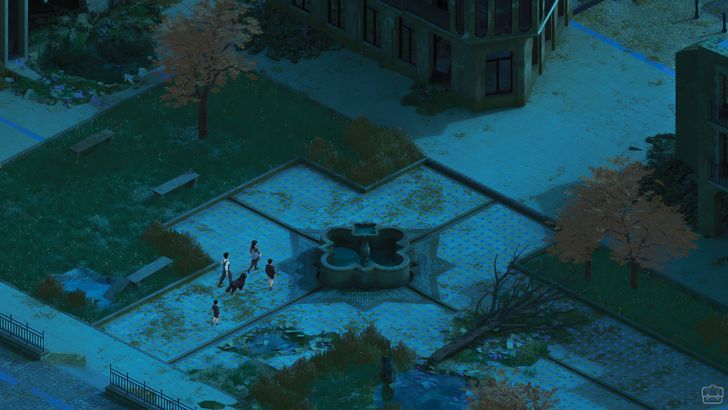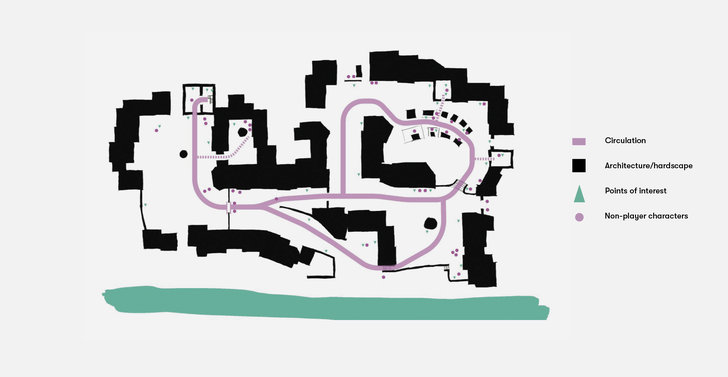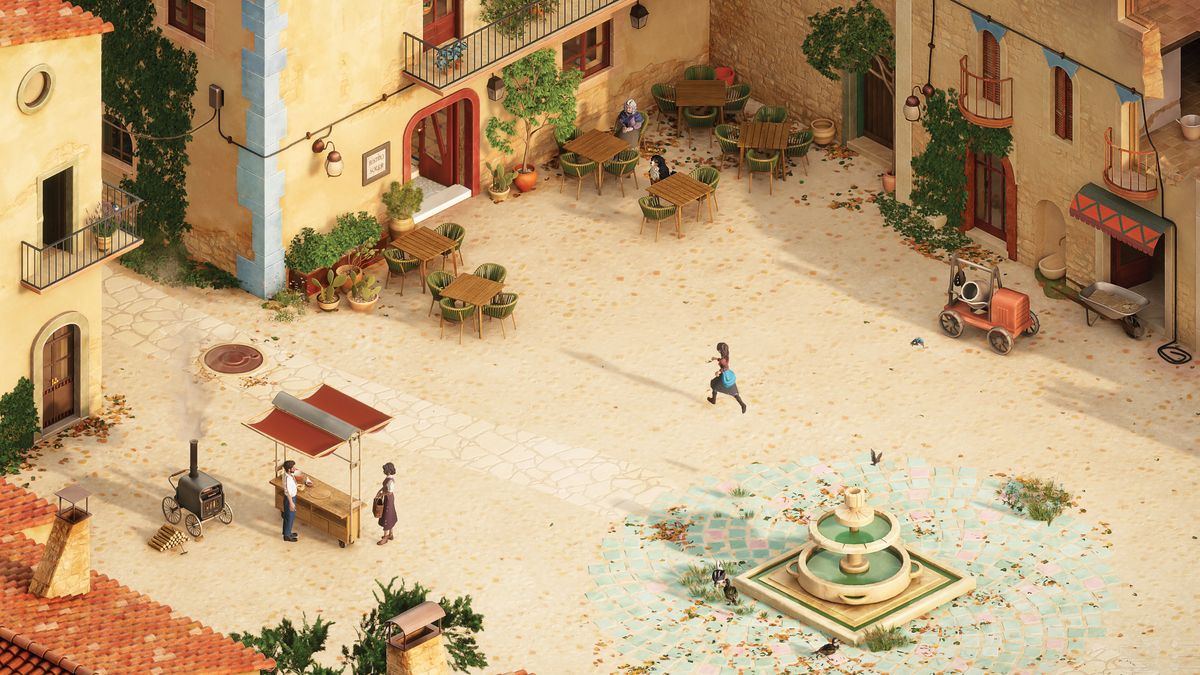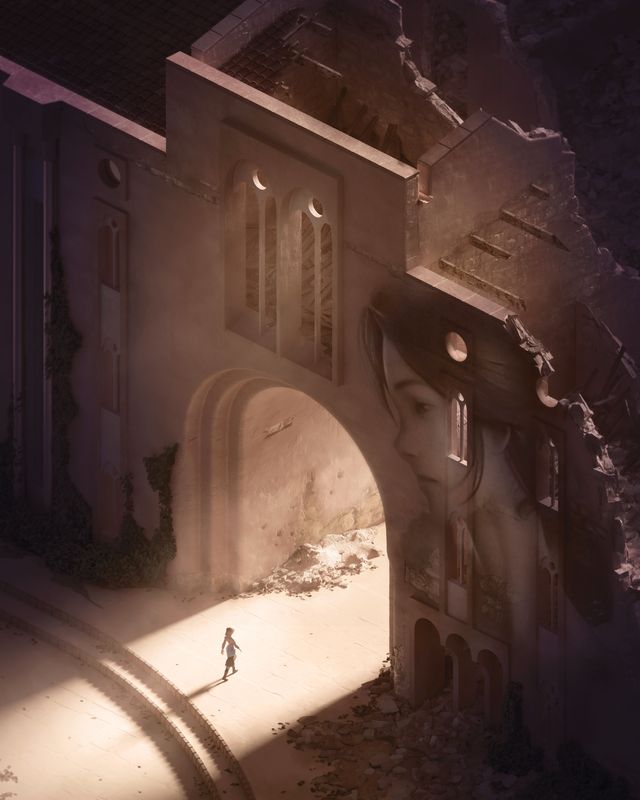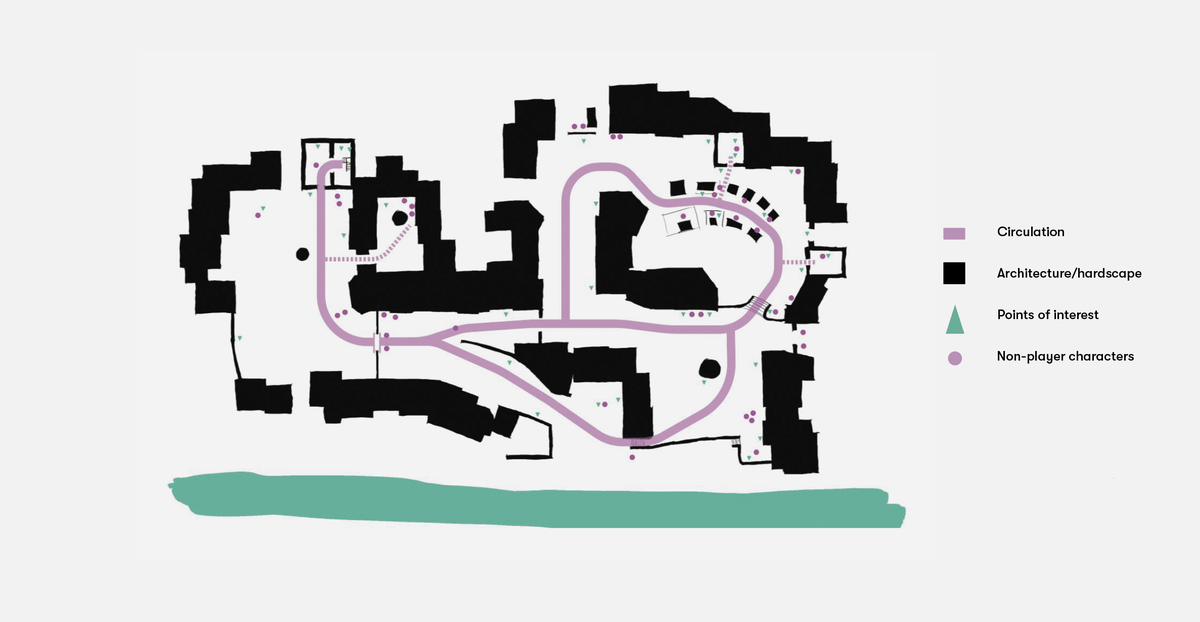With some exceptions, landscape architecture and architecture have had a limited engagement with the medium of video games as a form of culture and design expression. While practitioners from the built environment work within video game development, they often do so directly after graduation. It is uncharted territory in Australia for an established practice to attempt to broaden its portfolio from the constructed realm into the digital space of games. Our small interdisciplinary architectural visualization studio, Lucernal, is attempting to bridge this industrial gap by developing our first video game title, Little Ruin. Doing so has necessitated a twofold innovative shift within our practice: first, in terms of generative approaches to design; and second, at the level of business development.
I co-founded Lucernal with my partner, Mark Fenollar. The studio’s work covers a diversity of sectors from mixed use, aged care, multiresidential and infrastructure, through to the public realm. Mark worked in architecture as a graduate before specializing in visualization. Practising the tools and techniques of design visualization has enhanced his aptitude for creative direction – a skill that generalizes very well to video game development. By contrast, I am a landscape architect with a background in cultural studies, and have worked in design research and teaching. My research is concerned with the political ecology of designed space amid settler coloniality. Mark and I share a passion for design aesthetics, processes and techniques, and visualization has been a useful mechanism through which to develop our professional practices. However, we are also socially and culturally minded designers, and video game development offers a new opportunity to apply our existing knowledge in a creatively rewarding way.
Currently in a development phase of pre-production, Little Ruin is an ideologically driven isometric adventure game about growing up, difficult choices and belonging. The player explores the ambivalent space of settler colonialism through the story of Isobel, a teenage girl entangled in the machinations of a colonial civil war. We are delving into how player self-determination acts as a means of eliciting empathy and sparking broader ideological questions of social justice. As an individual within a community, the player navigates sociopolitical dynamics through the mechanics of interpersonal relationships.
In Lucernal’s game Little Ruin, players explore the ambivalent space of settler colonialism through the story of Isobel, a teenager entangled in a civil war.
Image: Lucernal
The game design considers the ambivalence of settler coloniality and how this manifests in our built environments. Place reflects this political ecology and so we prioritize detail, with the realism of construction detailing, material selection, scale, proportion, aspect, vegetation and styling supporting the narrative. The design is influenced by ideas such as terrain vague, drawing on the aesthetics of urban exploration and the imaginative potential of liminal spaces.
The architecturally familiar, conventional isometric view of the game that we have chosen to use preserves scale, but also constrains the design of spaces around a controlled frame that defines the game’s cinematography. The isometric view brings a sense of nostalgia, referencing an earlier era of games while also suggesting imaginative physical models (dolls’ houses, theatre set maquettes) and lending dramatic weight to the game’s narrative action.
The biggest shift to our design process comes through the relationship between the environments and the narrative design. While we work through a conventional process of iteration, modelling and sketching while referencing precedents, the main generative driver is the story. Circulation, for example, needs to enable specific narrative beats. We begin with a sketch diagram, then move into a scaled plan, then translate this into 3D massing models, which are used to interrogate spatial relations and flows against the storyline. The iterative process is circular: diagrams and models inform new narrative design and gameplay opportunities; this, in turn, requires us to revisit the design at the level of the diagram, the plan and the model.
Architecturally familiar, the game’s isometric view preserves scale and constrains spatial design within a controlled frame.
Image: Lucernal
While this shift is creatively rewarding, the act of making Little Ruin is one of tremendous commercial risk for Lucernal. The studio is currently a chimera of architectural visualization and video game development that threatens, at times, to tip into one field or the other – or, worse, to dissolve entirely. Growth for small design practices is inherently slow and visualization is no different. It takes years to build client relationships that enable stability. Protecting what we have built and continuing to service our existing client base, while sustainably executing a project for which we have passion, in a way that is commercially viable requires a delicate balance.
Government screen agency funding has been a fundamental enabler. In 2020, we developed a sketch prototype of our game idea and successfully applied to Vicscreen for a grant to develop this into a proof of concept. Through a lot of hard work, we have since gained further support from Vicscreen to develop a “vertical slice” to pitch to potential partners, while completing the narrative design of the game. In addition to production funding schemes, further support for video game developers is being unlocked at both state and federal levels through tax offset schemes that offer avenues to de-risking. This offers an entirely new set of business structures that are not typically present in landscape architecture or architecture.
A diagram showing circulation, structures, points of interest and non-player characters in Little Ruin. The diagram is used to assess the relationship between elements from a game-play perspective.
Image: Lucernal
While we can draw on significant existing knowledge and experience, we have to be prepared to step outside of our comfort zone to find publishing support for the project. We have just visited the largest video games consumer and business-to-business market in the world, Gamescom, in Cologne, Germany. Our goal here was to pitch our project to potential partners and to expand our professional network within this industry that is largely still unfamiliar to us as a studio. The scale and intensity of the event was enormous, with more than 320,000 consumers and 31,000 business attendees.1 Unlike the types of industry events we are conditioned to attend, it brings a compression of an enormous abstract market into the physical realm of the trade hall. Despite events like this, finding any publishing partner – let alone the right one – for a video game like Little Ruin is a difficult task and by no means an assured outcome, particularly in the current economic climate. It has necessitated a long-term approach to business development, underscored by persistence, patience and a continued interrogation of potentials. Nevertheless, it is an exciting experience in terms of the possible reach it offers Lucernal, in both revenue and cultural influence.
While design discourse has fetishized simulation, artificial intelligence and the digital twin, it is silent when it comes to the potential impact of spatially driven narratives – a feature of almost all genres of video game. These doppelgangers of the physical not only blur our definitions of landscape architecture and architecture, but also have the potential to redefine our concrete futures. We are applying our cultural and technical expertise in the built environments to create something we feel is unique – an isometric adventure game of high technical, literary and aesthetic resolution. For us, this project has raised questions around the modalities of how we as designers can effect change. It offers the potential to do so in a commercially effective way, rather than through a purely artistic and reflective approach.
1. Jeffrey Rousseau, “320,000 attendees visited Gamescom 2023,” GamesIndustry.biz, 28 August 2023, gamesindustry.biz/320000-attendees-visited-gamescom-2023.
Source

Practice
Published online: 19 Mar 2024
Words:
Fiona Johnson
Images:
Lucernal
Issue
Landscape Architecture Australia, February 2024

